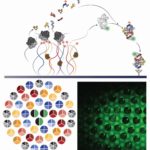
May 2, 2020
If an unconscious person responds to smell through a slight change in their nasal airflow pattern – they are likely to regain consciousness. This is the conclusion of a new study conducted by Weizmann Institute scientists and colleagues at the Loewenstein Rehabilitation Hospital, Israel.
According to the findings published in Nature, 100% of the unconscious brain-injured patients who responded to a ‘sniff test’ developed by the researchers regained consciousness during the four-year study period.
The scientists believe that this simple, inexpensive test can aid doctors in accurately diagnosing and determining treatment plans according to the patients’ degree of brain injury. The scientists conclude that this finding once again highlights the primal role of the sense of smell in human brain organization. The olfactory system is the most ancient part of the brain, and its integrity provides an accurate measure of overall brain integrity.
Following severe brain injury, it is often difficult to determine whether the person is conscious or unconscious, and current diagnostic tests can lead to an incorrect diagnosis in up to 40% of cases.
“Misdiagnosis can be critical as it can influence the decision of whether to disconnect patients from life support machines,” said Dr. Anat Arzi, who led the research.
“In regard to treatment, if it is judged that a patient is unconscious and doesn’t feel anything, physicians may not prescribe them painkillers that they might need.”
Arzi commenced this research during her doctoral studies in the group of Professor Noam Sobel of the Weizmann Institute of Science’s Neurobiology Department and continued it as part of her postdoctoral research at the University of Cambridge’s Department of Psychology.
The ‘consciousness test’ developed by the researchers – in collaboration with Dr Yaron Sacher, Head of the Department of Traumatic Brain Injury Rehabilitation at Loewenstein Rehabilitation Hospital – is based on the principle that our nasal airflow changes in response to odour; for example, an unpleasant odour will lead to shorter and shallower sniffs. In healthy humans, the sniff-response can occur unconsciously in both wakefulness and sleep.
The study included 43 brain-injured patients in the Loewenstein Rehabilitation Hospital. The researchers briefly placed jars containing various odours under the patients’ noses, including a pleasant scent of shampoo, an unpleasant smell of rotten fish, or no odour at all.
At the same time, the scientists precisely measured the volume of air inhaled through the nose in response to the odours. Each jar was presented to the patient ten times in random order during the testing session, and each patient participated in several such sessions.
“Astonishingly, all patients who were classified as being in a ‘vegetative state’ yet responded to the sniff test, later regained consciousness, even if only minimal. In some cases, the result of the sniff test was the first sign that these patients were about to recover consciousness – and this reaction was observed days, weeks and even months prior to any other signs,” Arzi said.
Moreover, the sniff response not only predicted who would regain consciousness, it also predicted with about 92% accuracy who would survive for at least three years.
“The fact that the sniff test is simple and potentially inexpensive makes it advantageous,” explained Arzi.
“It can be performed at the patients’ bedside without the need to move them – and without complicated machinery.”
A mindful tennis game
After a severe head injury, patients may fall into a comatose state – their eyes are closed and they do not have sleep-wake cycles. A coma usually lasts for about two weeks, after which there could either be a rapid improvement and return to consciousness, deterioration leading to death, or it could lead to a condition defined as ‘disorder of consciousness’.
When spontaneous eye opening occurs but there is no evidence that the patients are aware of themselves or their surroundings, they are then diagnosed as being in a ‘vegetative state’. Alternatively, if a patient displays consistent signs of awareness, even if they are minimal and unstable, the patient will be classified as being in a ‘minimally conscious state’.
The gold standard diagnostic tool for assessing the level of consciousness is the Coma Recovery Scale (Revised), which examines responses to various stimuli: eye movements while tracking an object; turning the head toward a sound; response to pain, among others. Since the rate of diagnosis errors may reach up to 40%, it is recommended to repeat the test at least five times.
However, misdiagnosis may also occur when the test is conducted repeatedly.
“In a well-known study, a patient diagnosed as being in a ‘vegetative state’ following a car accident was scanned in an MRI machine. While in the scanner, the researchers asked the patient to imagine that she was playing tennis and observed that her brain activity was similar to the brain activity of healthy people when they also imaged playing a tennis game. Suddenly, they realised: ‘hold on a minute, she’s there. She hears us and is responding to our requests. She simply has no way of communicating’,” said Arzi.
“There are also known cases of people who were diagnosed in a ‘vegetative state,’ but when they regained consciousness, they were able to recount in detail what was occurring while supposedly vegetative. Diagnosing the level of consciousness of a patient who has suffered a severe head injury is a major clinical challenge. The sniff test we have developed may provide a simple tool to tackle this challenge.”







